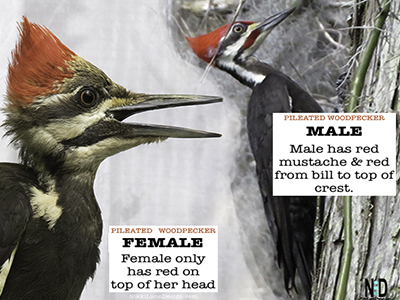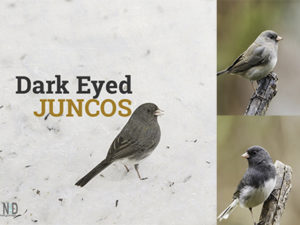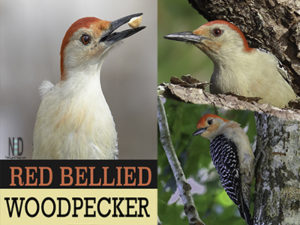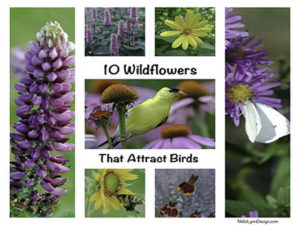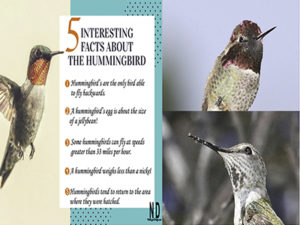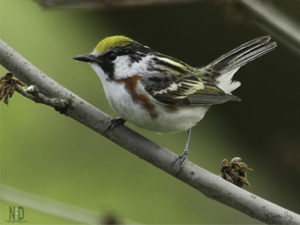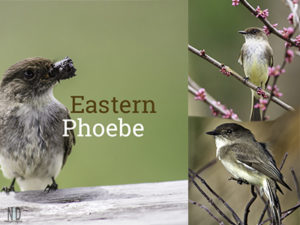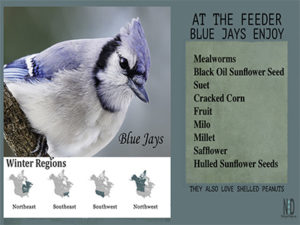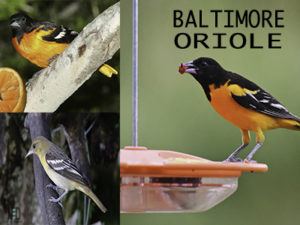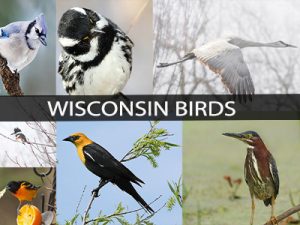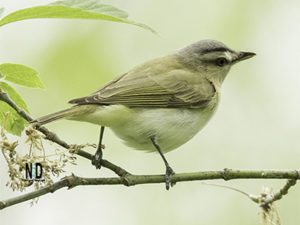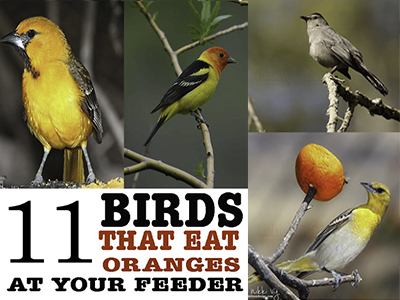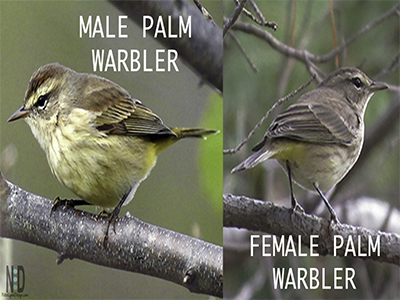Pileated Woodpecker
The pileated woodpecker is the largest woodpecker in North America. The term pileated comes from the Latin word pileatus meaning “capped” which refers to the red crest on the top of the bird’s head.
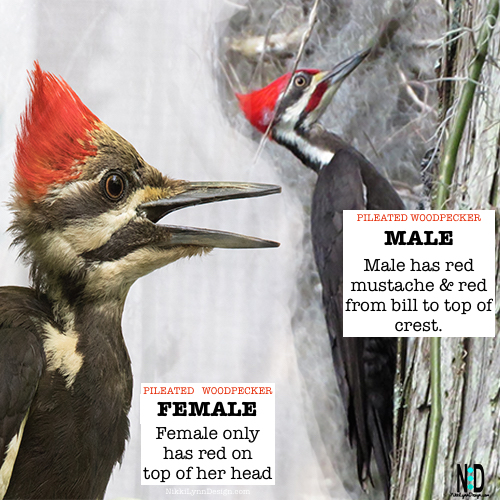
| Name:: | Pileated Woodpecker |
| Scientific Name:: | Dryocopus pileatus |
| High Classification: | Picidae |
| Size: | 16 to 19 inches |
| Habitat: | Woodlands, wooded backyards and suburbs, evergreen, deciduous forests |
| Diet: | Insects, suet, seeds, fruits, nuts, berries |
What Does The Pileated Woodpecker Look Like?
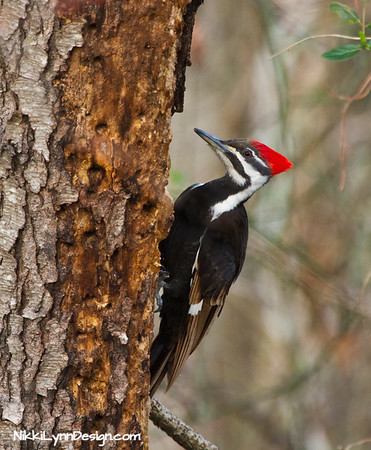
• Adults are 16 – 19 inches long.
• Wingspan of 26-30 inches.
• Black bird with red crest and a white line running down throat.
• Large bill
• Whack-a-wack-a-wack and kac-kac-kac-kac calls.
How To Tell The Male From The Female
There are a few distinct differences between males and females pileated.
Male Pileated
Female Pileated
The adult male has a red line from the bill to the throat which I like to call the male’s mustache and also a red line from the top of the bill to the crest.
Adult females only have a red crest (head). Notice there is no red under the bill area of the females.
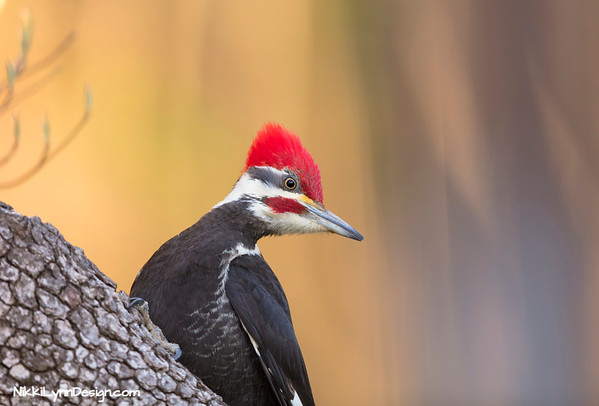
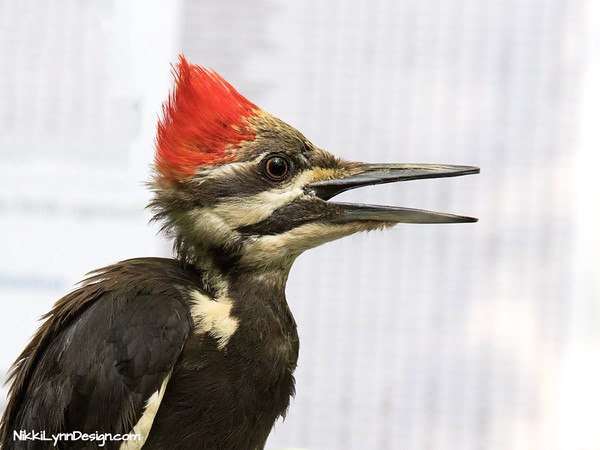
Male Pileated Woodpecker. Notice red under bill area.
- Bill longer than head.
- Head, crest, and malar stripe scarlet; chin and side of head pale lemon-color or white; a white patch on the wings; under wing-coverts white; rest of plumage dull brownish-black ; feathers of belly tipped with ashy color.
Female Pileated Woodpecker. Note no red under bill area.
- Bill longer than head
- Adult Female: Like the male, but the crown and malar stripe (malar stripe is under the bill area) is brownish-black instead of red.
Habitat
The birds like mature forests and heavily wooded parks. Preferring large, mature hardwood trees with plenty of down and rotten trees.
What They Eat
1.) Carpenter ants and beetle larvae – The pileated woodpeckers mainly eat insects, they love carpenter ants and wood-boring beetle larvae. They feed on insect larvae from inside trees and under the bark by using their long tongues to get into the crevices.
2.) Fruits, Nuts, Berries – They forage fruits, nuts, and berries in the wild. On occasion, the birds will come to the feeder for black oil sunflower seed, hulled sunflower seed, peanuts and a variety of berries if using a large platform feeder or feeder attached to a tree.
You can dry your own berries for the birds and create your own mixes to serve the birds in simple tray feeders
3.) Suet – They will come to feeders for suet, try your hand at making your own will this recipe. Be sure that your suet holders are firmly attached to a tree and not swinging in the wind.
Black oil sunflower seeds attract the widest variety of songbirds, including cardinals, chickadees, finches, nuthatches and woodpeckers.
The seed can be used in tubular, hopper or tray feeders
An easy way to prevent litter under feeders. Great for decks, gardens and patio areas.
Attract finches, cardinals, jays, chickadees and woodpeckers. High in protein, especially great in the winter, when birds need conserve their energy to stay warm
Platform Feeders

Pileated woodpeckers are not a fan of swinging in the wind.
Large wooden platform feeders that are securely fastened to poles and decks are a good choice for pileated woodpeckers to take peanuts, black oil sunflower seeds, and sunflower hearts from.
Suet Feeders
Suet

Be sure to purchase a feeder with an extra long-tail prop bottom panel, this will allow the Pileated Woodpecker (and for that matter, Flickers & Red-bellied Woodpeckers) to use their tail to support them when on the suet feeder.
Damage They Can Do
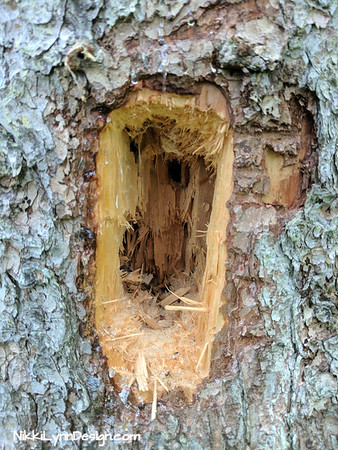
Woodpeckers can carve out large sections in trees looking for insects.
The large gapping holes left behind can introduce harmful bacterial infections, leaving the tree vulnerable to death.
Attracting Mate
That loud drumming sound they make happens for a reason.
That loud noise is the bird’s way of claiming its territory and attracts a mate. In April, the hole made by the male attracts a female for mating and raising their young.
Nesting Info
| Habitat: | Hole excavated in the trunk of a large dead tree, 20 to 75 feet from the ground. |
| Nest Shape | The chips and sawdust left after exca\ating act as a bed for their eggs. |
| Eggs: | 3-5 eggs that are glossy, transparent white |
| Incubation: | 2 to 16 days |
| Fledging: | 30 days after hatching |
General Nesting Information
Woodpeckers raise their young every year in May or June in a hole excavated in the trunk of a large dead tree, 20 to 75 feet from the ground. The roost of a pileated woodpecker usually has multiple entrance holes.
Females lay 3-5 eggs that are glossy, transparent white, and become opaque as incubation advances are laid by the female. The eggs rest on a bed of wood chips that line the nesting cavity. Both parents incubate the eggs for 12 to 16 days. The young stay in the nest for about a month where the adults feed young by regurgitation for the first two weeks or longer.
Additional Site Categories
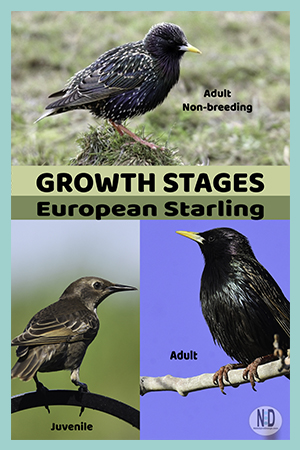
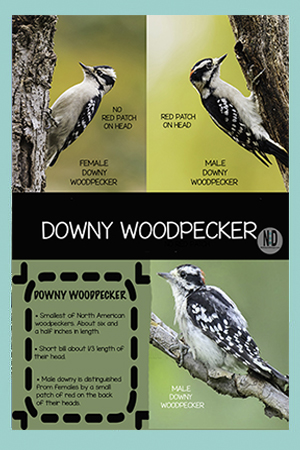
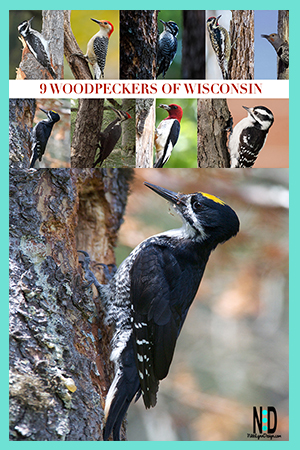
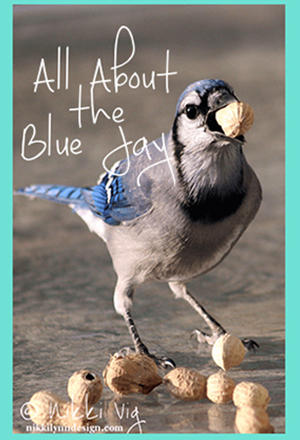

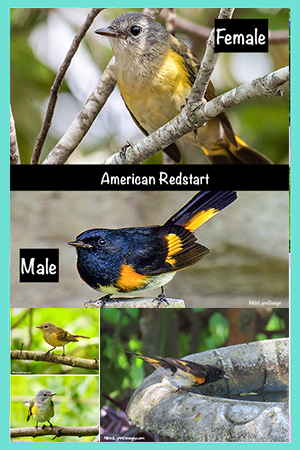
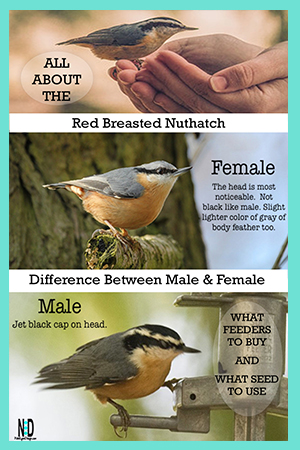
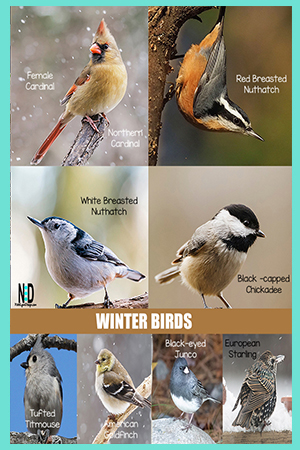
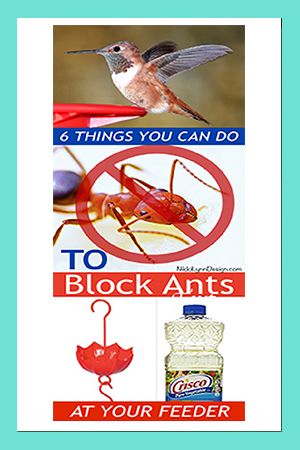
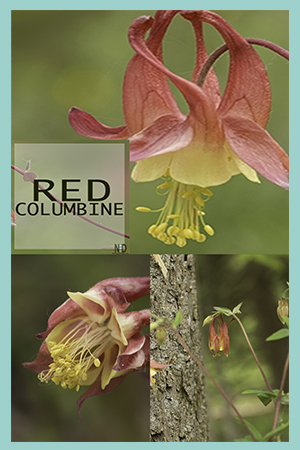
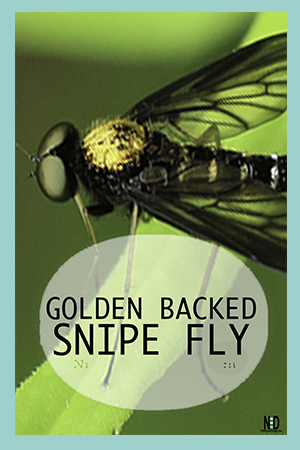
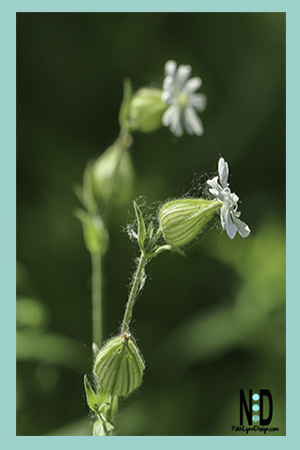
AFFILIATE POLICY: Posts on this site may contain links to outside vendors that pay me a commission when you purchase from them, at no additional cost to you. Thank you for supporting this site!
